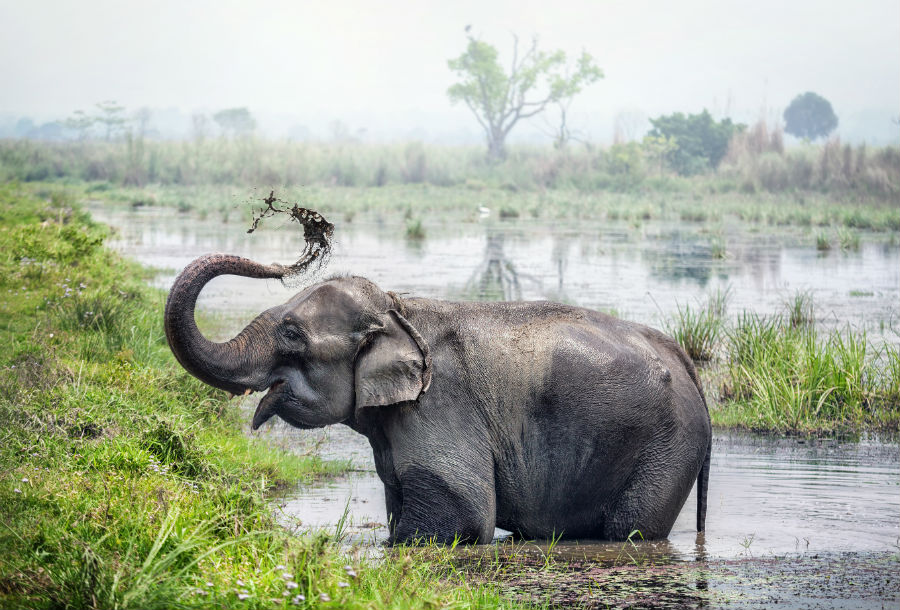Skinning for profit
SKINNING FOR PROFIT
EVIDENCE IS EMERGING OF A NEW THREAT TO ASIAN ELEPHANTS – A GRUESOME TRADE DEALING IN BEADS AND MEDICINAL POWDER… MADE FROM THEIR SKIN, AS BORN FREE’S ASSOCIATE DIRECTOR FOR ASIA & OCEANIA GABRIEL FAVA EXPLAINS
Estimates place the total population of Asian elephants in the wild at anywhere between 30,000 and 50,000, at most around a tenth of their African cousins. At the turn of the 20th century there were approximately 100,000.
As with many large terrestrial mammals, impacts on elephant habitat are critical, be it outright land clearance or the more insidious gradual deterioration due to external pressures. The expansion of human populations also increasingly provokes conflict over shared resources, and elephants are compressed into disconnected areas, leading to highly fragmented and vulnerable populations.
As precarious as this situation already is, two additional threats have emerged in recent years.

Since female Asian elephants don’t grow tusks and only some males do, only a percentage of any given elephant population is under direct threat from poachers after ivory. However, the skin trade means it’s now open season on entire herds, as we’ve seen from reports and images of groups of elephants of all ages found together, slain and skinned. The horror of this trade is second to none.
Other countries such as Laos and Thailand are implicated, but so far the main source of skin appears to be elephants in Myanmar, where recorded cases of killing increased by 15 times from 2010 to 2016. Skin is transported across borders into China, the final destination and main source of demand.
As a clearer picture of this growing trend in poaching was emerging, indications were also growing of a well organised and high volume trade: large amounts of packaged skin being seized by enforcement authorities; sourcing of chunks of ‘raw material’ by traders; large scale processing of skin; and producers advertising and selling skin through social media and online forums.
This trade is of very significant concern, especially if demand for these products continues to be stimulated by their ready availability, driving poaching to higher levels and spreading to other elephant range countries.
A recent report only added to the alarm, with the revelation of a Chinese government licensing scheme piloting the production of elephant skin pharmaceuticals. An official stamp of approval from the government in the country with the main demand for these products is a big problem.
For one thing, it drastically undermines wildlife law enforcement efforts attempting to curb wildlife crime in source and transit countries, both on the ground in elephant habitat and at border points. Additionally, it can only fuel demand, and if past experience is anything to go on, current trends in trafficking and sales will only increase. Previously, similar government schemes for products made from parts of other threatened wildlife, such as pangolin scales, have progressed to fully viable commercial trade. Skin products have already been found by investigators in southern provinces of China well known for the sale of other wildlife parts and products.
We simply cannot let Asian elephants go down this road. Skin cannot become the new ivory. Born Free is working with other stakeholders to ensure this doesn’t happen.
Find out more about Asian elephants and Born Free’s work to conserve and protect the species
